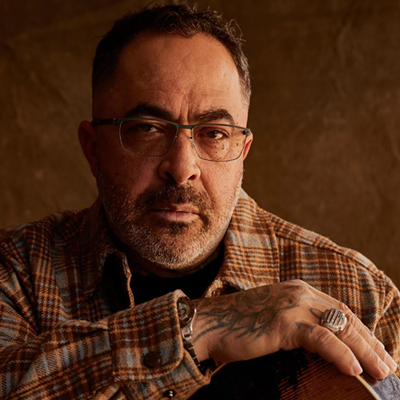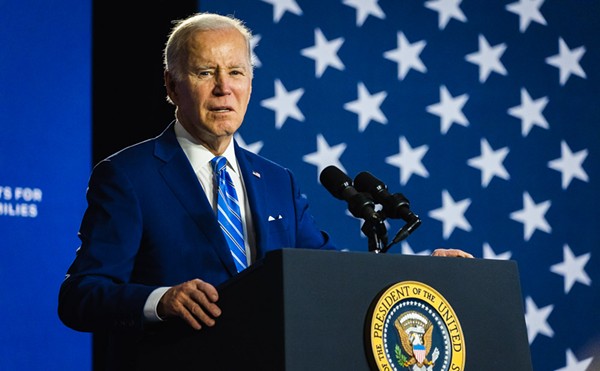The national near-panic in the fall of 2003 over the supposed spread of a deadly flu epidemic and a shortage of flu vaccine was little more than a joint government/ industry PR campaign — an operation that greatly increased flu vaccine makers' profits while scaring the bejesus out of millions of Americans.
The U.S. media let itself be led down the garden path without checking into the stories they were being told about the extent of the flu. Perhaps if the health reporters at the big news outlets had talked to the business reporters last fall, someone might have put it all together before 82 million Americans took a needle in the arm.
Instead, media-driven hysteria over what was supposed to be the deadliest flu season in decades drove the American public to set two national records — one for flu vaccination and another, less widely known, for corporate vaccine profits — in an industry with a long history of losing money hand over fist on the flu.
Only two things didn't live up to all the flu hype. One was the flu season itself, which in the end was utterly unremarkable. Two was the desperately sought-after flu vaccine, which studies later showed was only about 14 percent effective in preventing the flu.
Suffice it to say, if Americans had known what Wall Street and the U.S. Department of Health and Human Services had riding on this flu season, the tens of millions of otherwise healthy people who stood in line waiting for a flu shot might have thought twice about it. Instead, panicked parents drove for hours, seeking out clinics in neighboring cities or states when those near them ran out of vaccines. In some states, they jammed doctors' offices at 10 times the normal flu season rate, dragging sniffling children behind them, terrified that the colds they normally let pass without the hassle of a doctor's visit might be the "killer" flu strain they'd been hearing about. Mayors and governors, pressured by constituents the clinics turned away, called Washington to demand more vaccines.
Driving it all was seemingly nonstop media coverage of what was supposedly the worst flu season in decades. For months, the most trusted names in television and print journalism screamed about the flu, using words like "deadly," "severe" and "worst in decades" in their news reports to describe a growing epidemic that they speculated could be made all the more lethal by a killer Fujian flu strain no one had anticipated until it was too late.
What the public didn’t know
Across the country, people, especially children, were dying earlier in the flu season and in higher numbers than the experts had seen before. At least that's what they said, and since they were nationally respected experts with impeccable qualifications, no one questioned them, nor the high-ranking government health bureaucrats who shared the microphone with them at press conferences about the flu. After all, what would these well-meaning people have to gain personally by misleading the public about the flu?
As it turns out, quite a lot. All it took to ignite a media feeding frenzy over the flu was a few well-placed suggestions by a few well-qualified people that this season could turn out to be far more deadly than usual. The media did the rest.
What the public wasn't told was that the handful of experts who drove the story, by predicting doom and gloom in national news reports, either worked directly for the flu vaccine companies or served on the boards of special interest groups whose activities those companies funded. The public was also never told that the same pharmaceutical companies, which had peppered Congress with millions in political contributions over the last three years, were pressuring the U.S. Department of Health and Human Services — and ultimately its sub-agency, the Centers for Disease Control (CDC) — to increase the number of people who bought their vaccines.
And even though nearly all the literature put out by the U.S. Department of Health and Human Services this season promoted the intra-nasal FluMist vaccine, which debuted on the market this year, no one bothered to mention that the department's researchers spent 20 years helping develop FluMist, the profits for which all go to the private companies selling and distributing it. (Although it helped improve the drug, which was originally invented by a University of Michigan researcher, the federal government holds no legal claim to any profits it generates.)
Often, what these so-called experts and health officials didn't say publicly was at least as important as what they did. A lot of the panic over the flu, which was driven by coverage of child deaths from the disease in the Midwest, would have been quelled if federal health officials and their friends, the ethically compromised flu experts, had emphasized that since this was the first year the CDC had required states to track child flu deaths and verify the flu as the cause of death with a test, there was no way to tell if the 111 child flu deaths the CDC eventually tallied represented an increase or a decrease. That important fact didn't make the cut in a single one of the CDC's press releases on the flu, nearly all of which pushed the use of FluMist.
















